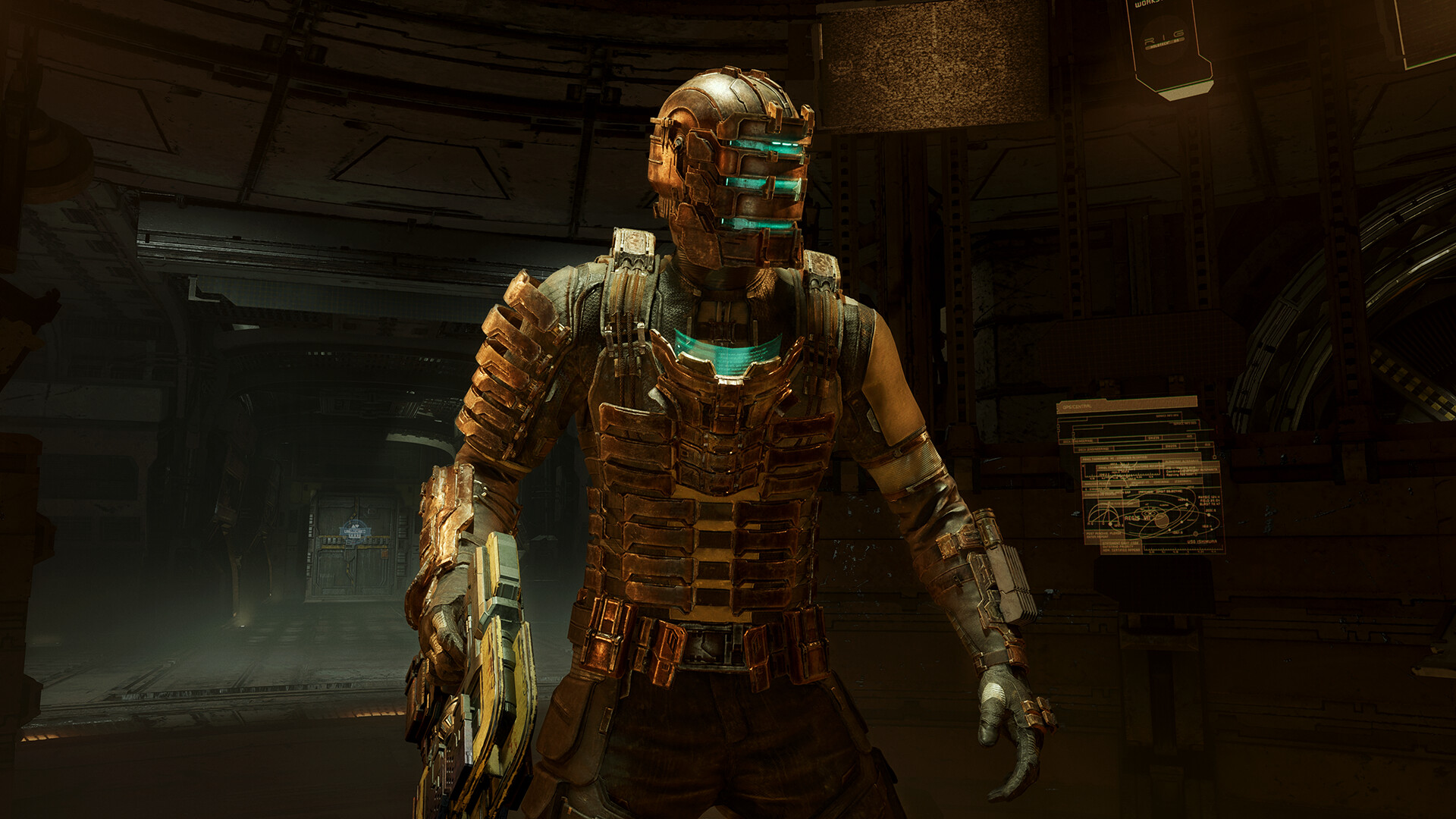Our Verdict
The Dead Space remake sets a new standard for the future of the survival horror series, even if it isn't the sequel I've been pining for.
PC Gamer's got your back
What is it? A remake of the 2008 survival horror game Dead Space.
Expect to pay: $59.99 (Steam)
Developer: Motive
Publisher: EA
Reviewed on: Windows 10, i5-12400F, 16GB DDR4 Ram, RTX 2060
Multiplayer: No
Link: https://www.ea.com/games/dead-space
"Twinkle twinkle little star, how I wonder what you are?" a dying woman sings over the elevator tannoy as I climb through the decks of the doomed ship Ishimura. I'm not a big fan of that whole nursery rhyme horror cliche, but it fits for Dead Space. This was never a series about exploring the wonders of the universe or of space as a wild frontier where the worst evil we can imagine is corporate greed dominating the stars. No, this is a game about how space is downright scary; an abyss into which we gaze and see our nightmares reflected right back. Hard to marvel at the universe with a Necromorph's blades in your gut.
Necromorph is a fancy space word for zombie by the way. You'll come to know them intimately in Dead Space, as they jumpscare you every few minutes for the next ten or so hours. If there's one thing I'm glad the remake didn't change, it's the Necromorph jumping-out-of-vent scream that almost sounds as if they're as surprised as you are. It really is good to be back on the Ishimura, even if this is a remake instead of a fourth game.
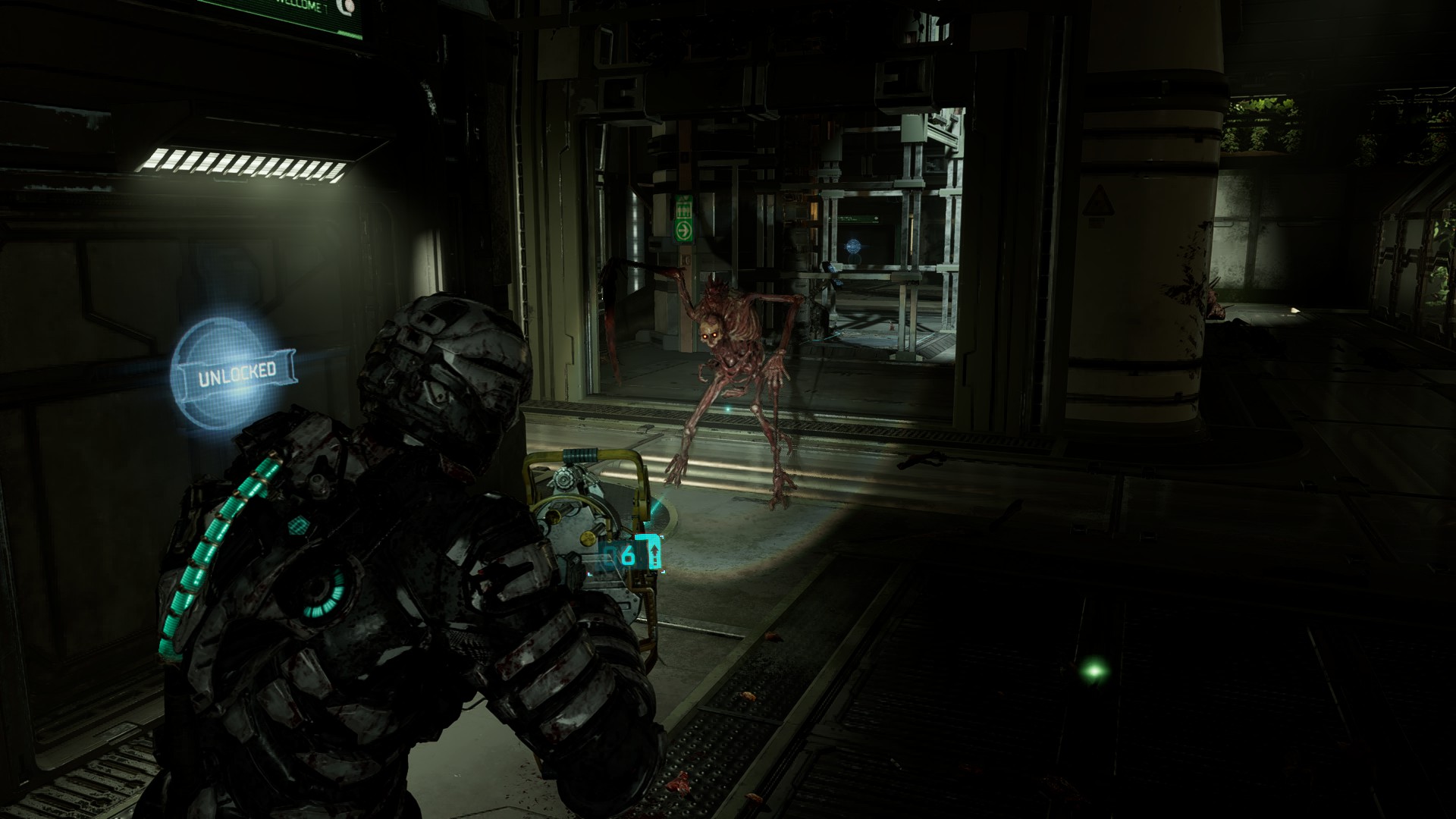
It's a fact made all the more frustrating by how much this remake feels like a brand new Dead Space. Sure, it's got the same bleak atmosphere, overarching narrative, and the same ol' Necromorphs, but it could be the foundation for Dead Space moving forward; proof that this survival horror formula is still as strong now as it was when the original launched in 2008. And I think a big part of this remake's strength is down to the fact that it builds on what was already there rather than trying to make something brand new, much like that Necromorph stabbing you.
Dead man walking
Isaac Clarke is your average space engineer, hoping to see his girlfriend Nicole after a long time spent apart. Instead, he finds himself working the worst shift in human history. As you bounce from crisis-to-crisis trying to keep the dying planet-cracker, USG Ishimura, on its last legs, you also have to contend with the ship's changed crew, now shrieking Necromorphs of all shapes and sizes who very much want to make friends. Your only defence? An array of sci-fi power tools that turn out to be pretty effective at dismembering angry aliens.
Dead Space manages more in ten hours than most games do in 30, and that narrative has been further focused in the remake. Isaac actually talks now and, though I did enjoy his silent yet capable Gordon Freeman-esque characterisation in the original, this helps make him feel like an active participant in the story. His dialogue does err a little towards action hero at times with lines like "I'm all out of good ideas, so guess what's left", but you do get more of a sense of him barely keeping his shit together as the crisis continues to escalate. It's one of the reasons I've always loved Isaac muttering curses as he stomps a Necromorph into oblivion—you can hear him starting to crack.
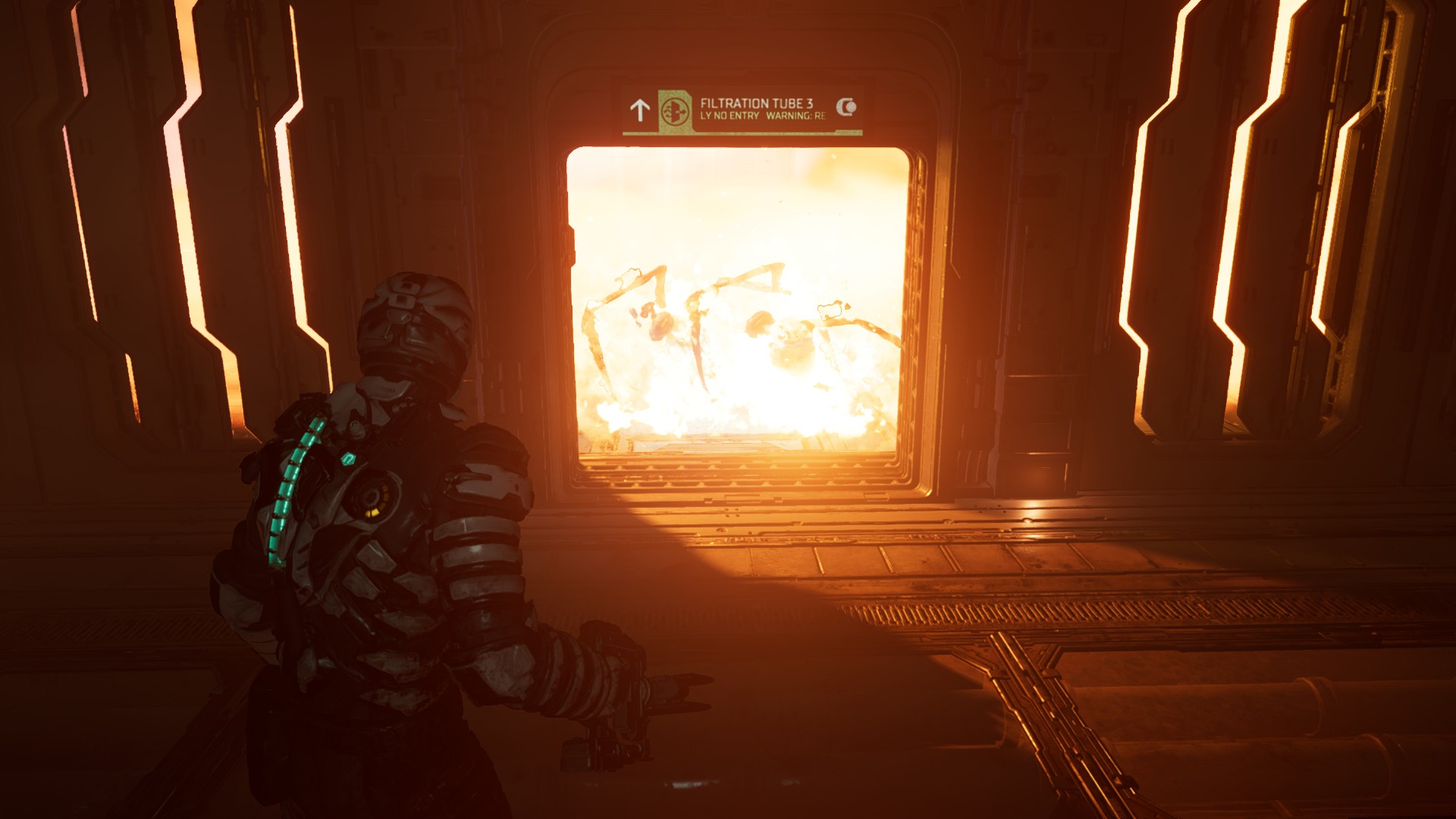
There are only so many limbs you can slice off, after all, even if the remake's weaponry does feel very good. There was a lot of talk about the new horrendous-sounding "Necromorph peeling" system in advance of the remake, but besides being a strong visual indicator of weakened limbs and what to chop, blowing more bits off Necromorphs is definitely a good time. My favourite thing has been blasting them point blank with the Force Gun and watching as an all-but-fleshless skeleton stands up like a chicken carcass put through one of those industrial blow dryers.
The Leviathan boss fights are infinitely more fun now Dead Space 2 and 3's free floating zero-G has been added.
Brutalising Necromorphs is an iconic part of Dead Space's cycle of catharsis: you jump scare me, I reverse-engineer you from existence, and this is how we cope with fear. Along with the great guns, there are also new alt-fire and upgrade options for weapons. The weird bullet cyclone for Pulse Rifle has been swapped for a proximity grenade launcher, and the Line Gun can lay down tripwires. For a Plasma Cutter purist like me, it's nice to be able to place a perimeter of traps and get a bit more use out of some of the other guns.
Most of the big ticket boss fights, such as tangling with the Necromorph Hunter in chapter five, play out frame-for-frame—though they definitely look a hell of a lot better. That said, both of the Leviathan boss fights are infinitely more fun now Dead Space 2 and 3's free floating zero-G has been added. The second boss fight in-particular has been entirely redesigned, with you gliding around the hulking mass and manually commandeering ADS cannons to blast away at its weak points.
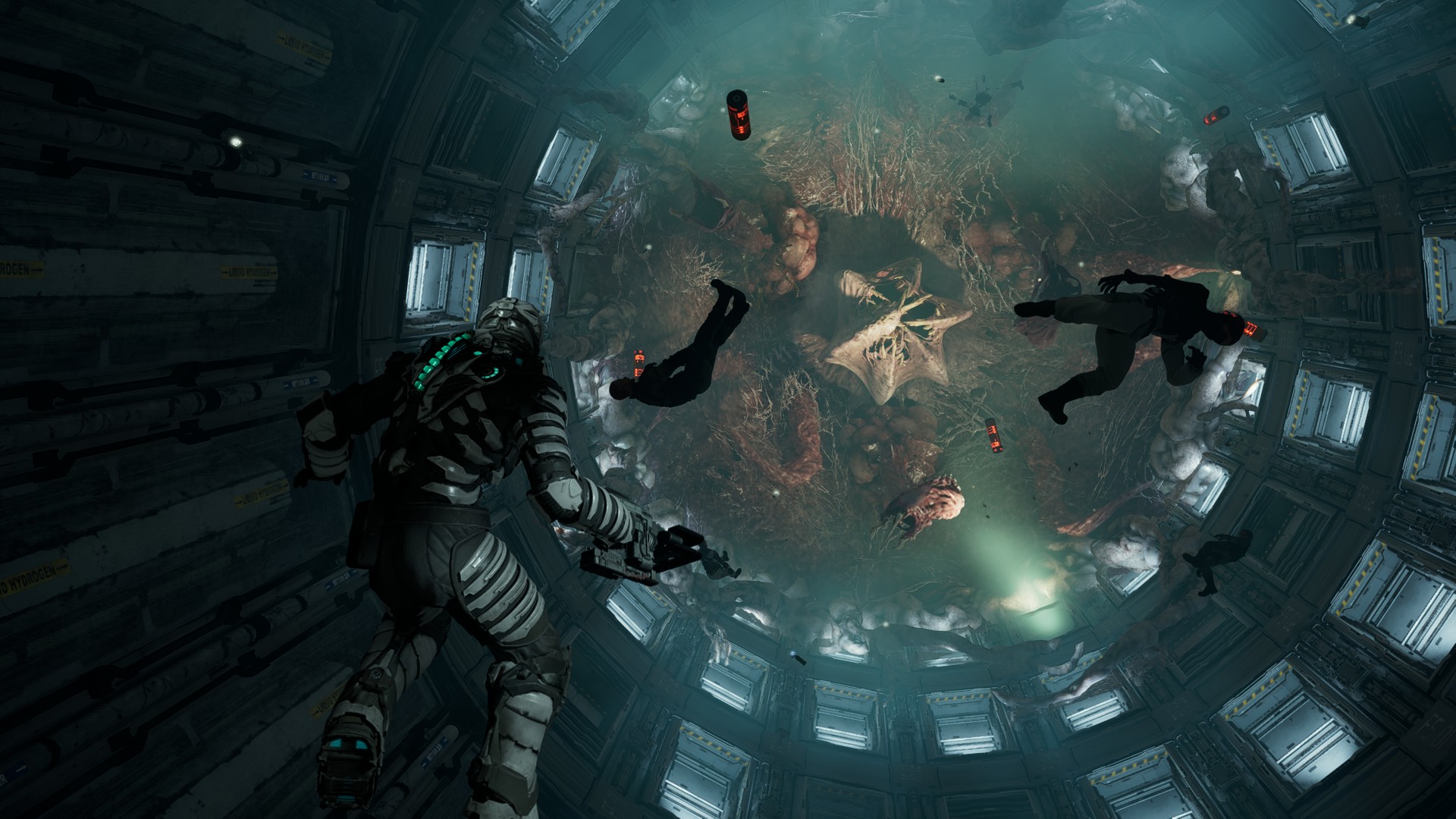
Fighting gravity
Dead Space's zero-G isn't just for tackling hulking space monstrosities, though. Another change is the inclusion of new no-gravity puzzles, and there's nothing quite like sitting back and floating as you try to figure out some complex space engineering problem. I say 'complex' even though it's usually just grabbing junk with kinesis. I've always found these sequences to be a nice respite from fighting Necromorphs, letting you think about something other than alien amputation for a little while, and they're a strong addition to the remake. Fixing the Comms Array in-particular is a very chill puzzle that lets you glide around in the middle of a big dome, swapping out parts, and repositioning to admire your work. There are even some open zero-G sections akin to the ship graveyard in Dead Space 3 that you can explore at will.
It's just one of the many changes that works to enhance the original. Circuit Breakers are another wonderful example. These power-switchers have been added to older sections as a form of devil's bargain, letting you choose what to turn on and off. You want elevator access? Sure, but it'll cost you either lights or oxygen. It's a pick-your-poison mechanic that lets players select their preferred difficulty modifier and fight through the area. One of my favourite Circuit Breakers in Hydroponics is purely psychological, letting you turn off 'Jungle Ambience' so you can hear the entity living in the vents.
Even a little expedition to open a locked room can be a dangerous proposition.
While there used to be few reasons to return to older areas of the Ishimura, the remake adds locked Security Clearance doors and containers to motivate you to explore fully for extra items. Since you gain clearance as you progress the story, you have to remember the location of these secret stashes, Metroidvania-style, and return once you've got the upgrades. Coupled with the new random encounters and visual and audio cues, it goes a long way to making previous areas feel a bit more occupied. Even a little expedition to open a locked room can be a dangerous proposition depending on your luck.
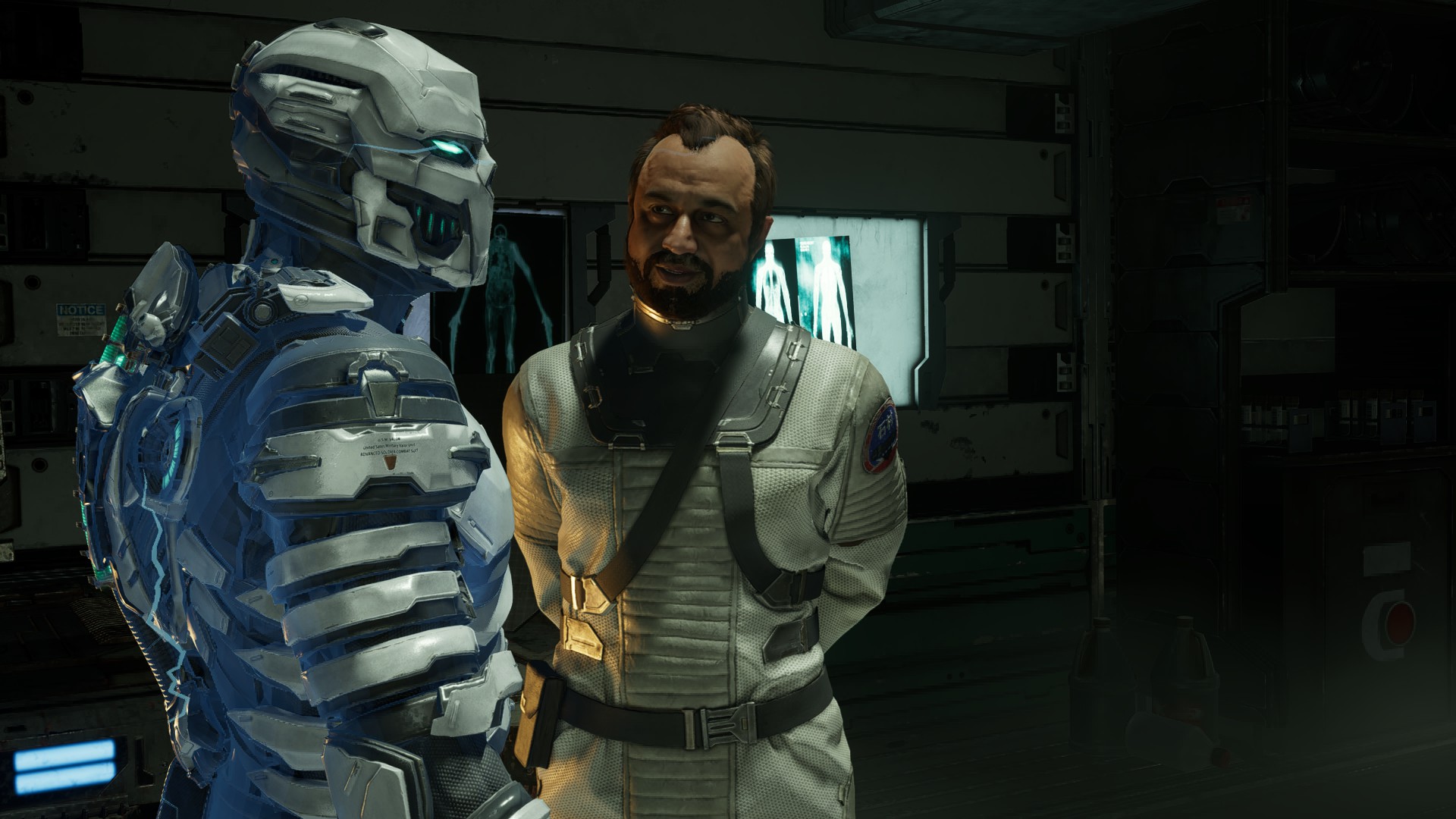
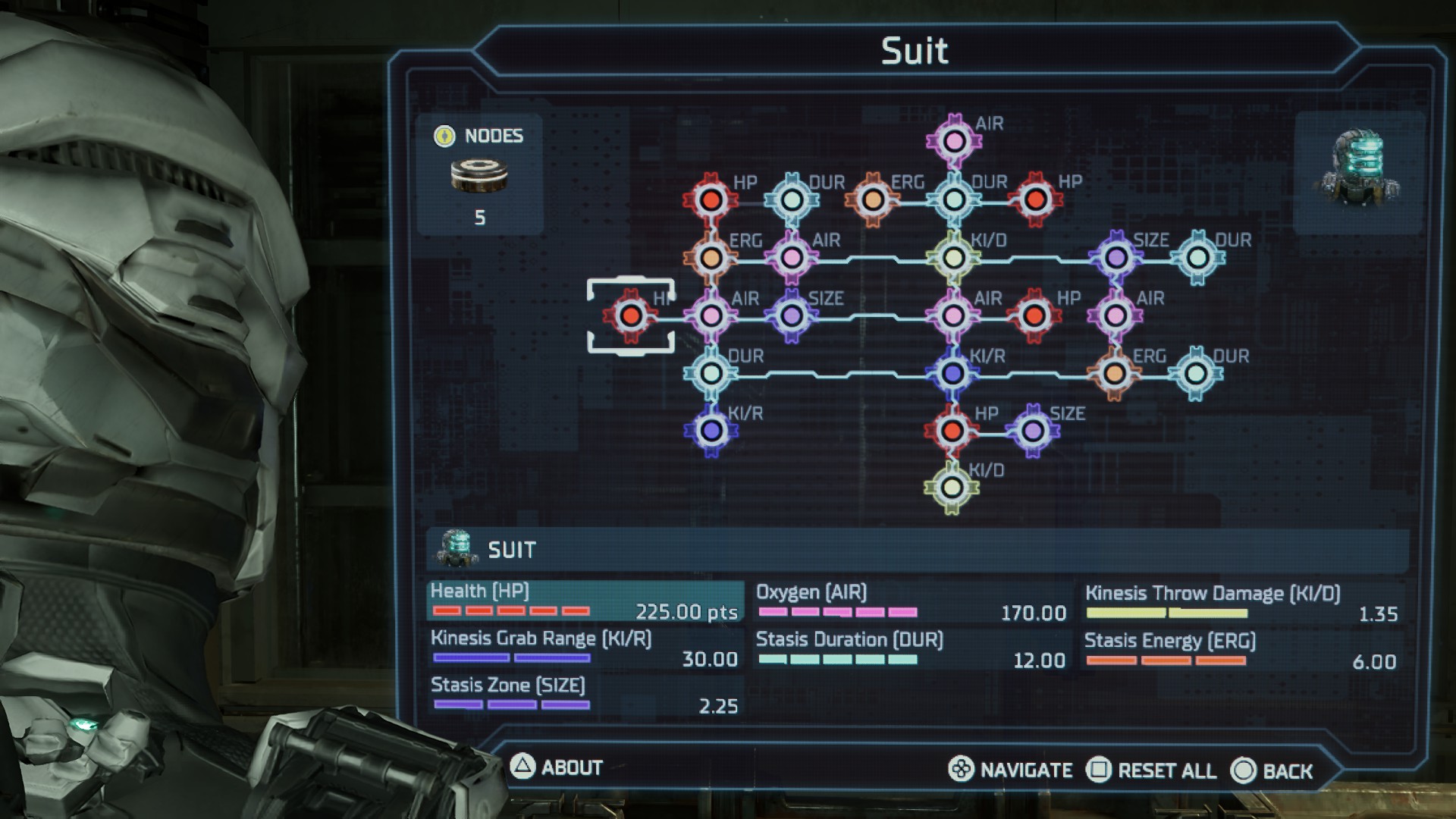
Already dead
This Dead Space remake could also be termed a narrative one, since while it doesn't change the major story beats or plot of the original it does cast them in a completely new light via side quests, holographics logs, new characters, and through Isaac being able to speak this time. People like Elizabeth Cross, who you never interacted with directly, are now fully-fledged characters who have their own individual plotlines. The side quests also offer Nicole's perspective on what was happening onboard the Ishimura, and give you more insight into the cruelties of main antagonist, Dr. Mercer, who's now a more fully-developed character.
Motive's done a great job in judiciously adding layers to the original story, focusing on existing but underdeveloped elements, and just generally giving players more insight into the Ishimura and its conflicts prior to Isaac's arrival. It makes the first Dead Space fit far better with the other games from a lore and continuity perspective, but it's the execution that really lands, with no oversteps or overly significant changes. Subsequent playthroughs even provide extra audio logs and Easter eggs, some of which inform the reveals from the original ending.
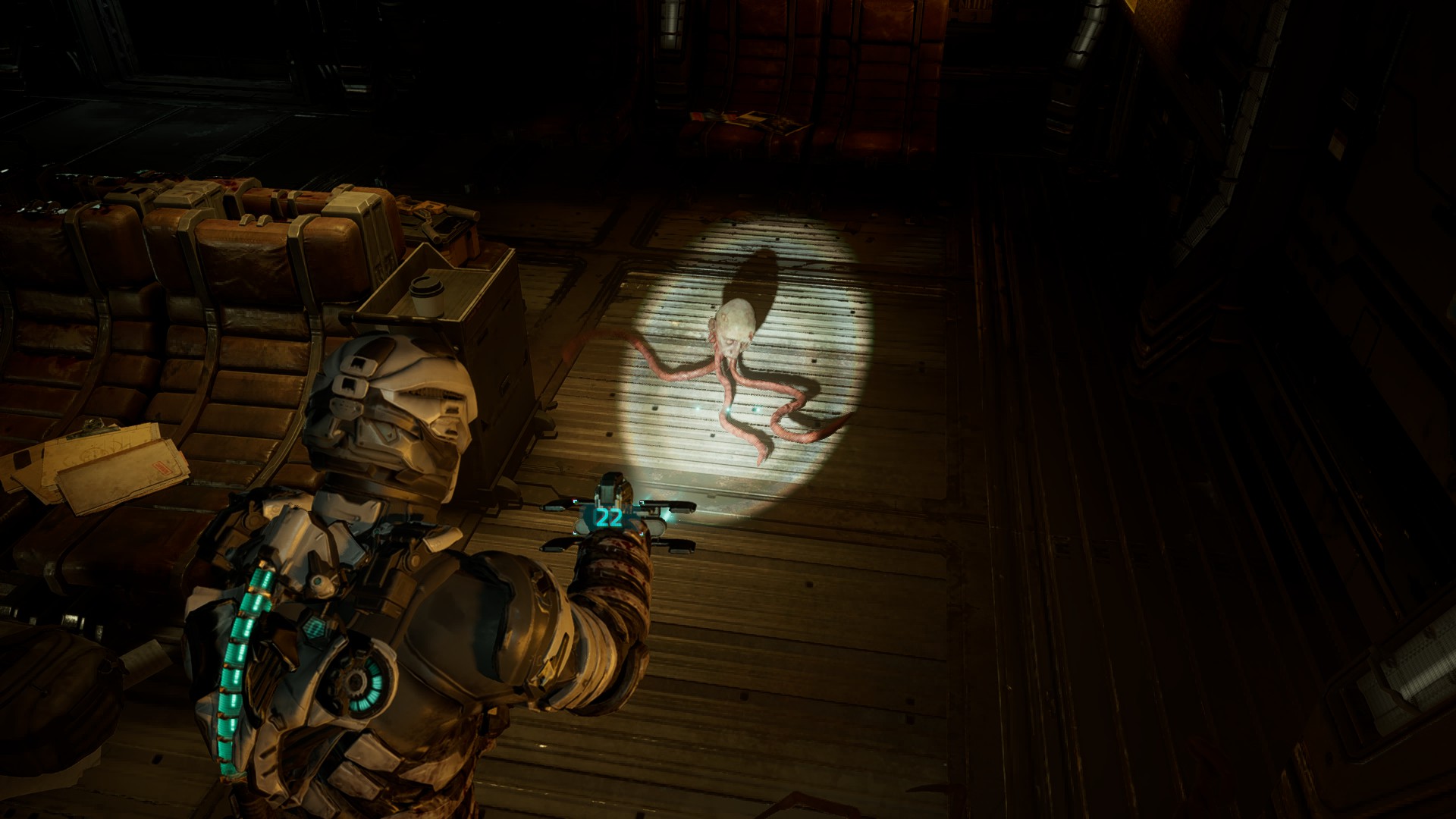
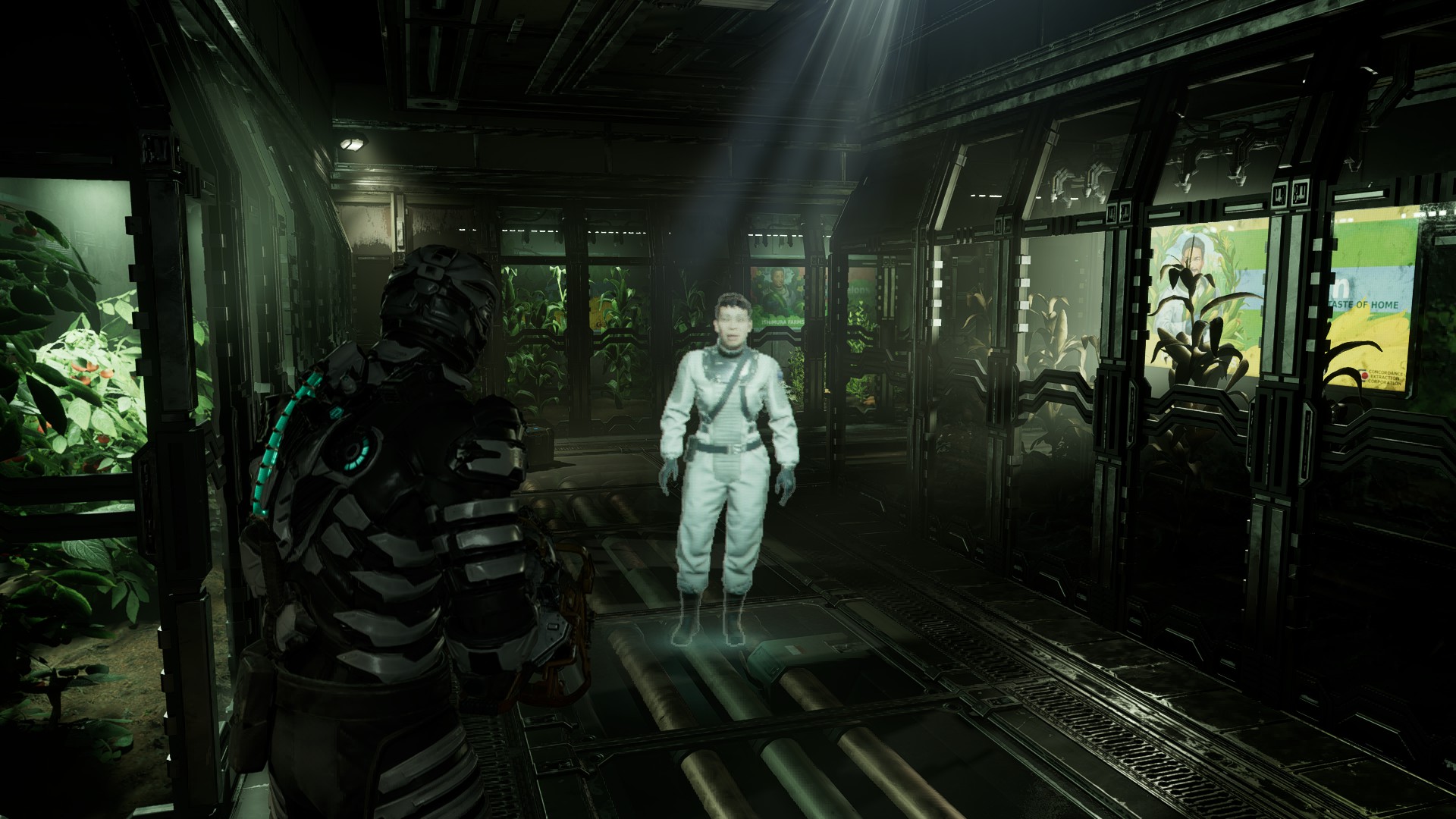
Yet the overall effect is weirdly frustrating. On one level it's amazing that so much effort has gone into re-developing the original game's plotline: But at the same time, this effort could've been equally well applied to a new Dead Space. It's hard not to feel the same way about the improved sound design and visuals. The remake was built from the ground-up using the Frostbite engine, and looks and sounds incredible. All of which mainly makes me want to play a new non-remade Dead Space game in 2023 with this production quality. Another aspect of the frustration is that another game might've had space to push some of the remake's new ideas and mechanics further.
But it also speaks to how strong this remake is that my primary complaint is wishing the care and effort went into a sequel. This game could have gone further in terms of adding replayability for older areas since, beyond weapon upgrades, you don't really need credits or ammo from Security Clearance stashes beyond a certain point. The side quests mostly run parallel to the main story, too, so while they add a nice complementary layer, they don't provide much extra playtime.
It took me around 12 hours to complete everything on medium difficulty, but the remake also features new game plus with harder 'phantom enemies' and twelve hidden Marker Fragments that unlock an alternate ending if found. So even though it's a little on the shorter side, this is what Dead Space has always been: an intense, momentum-driven experience. Most of all, I'm just happy Dead Space is back and Dead Space is good. Even if this doesn't lead to a new game, I'll keep my limbs crossed for an equally strong remake of the second in the future.
The Dead Space remake sets a new standard for the future of the survival horror series, even if it isn't the sequel I've been pining for.

Sean's first PC games were Full Throttle and Total Annihilation and his taste has stayed much the same since. When not scouring games for secrets or bashing his head against puzzles, you'll find him revisiting old Total War campaigns, agonizing over his Destiny 2 fit, or still trying to finish the Horus Heresy. Sean has also written for EDGE, Eurogamer, PCGamesN, Wireframe, EGMNOW, and Inverse.
